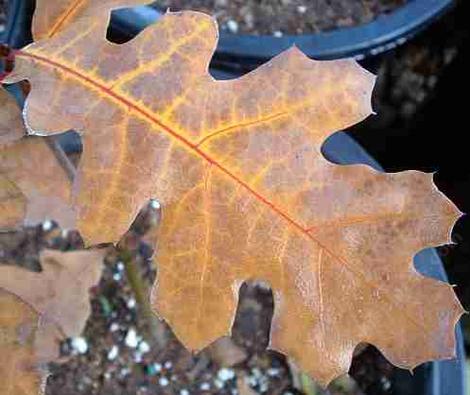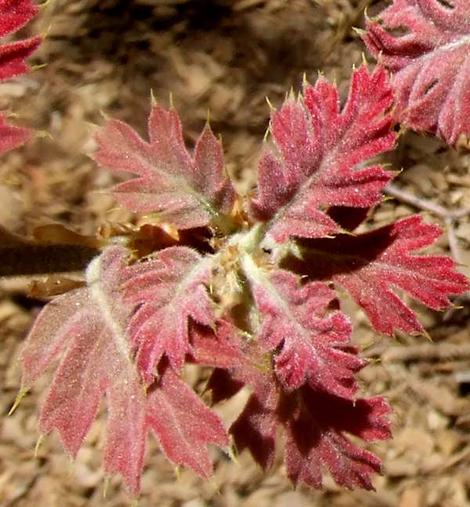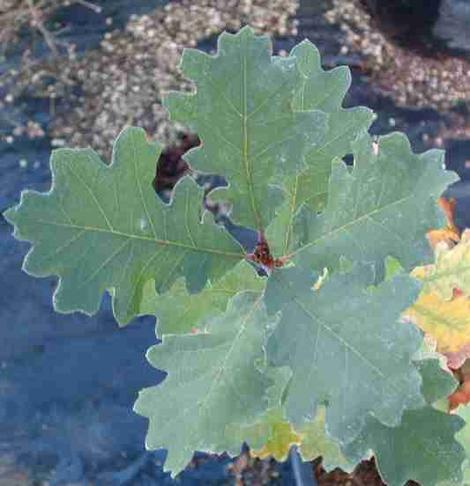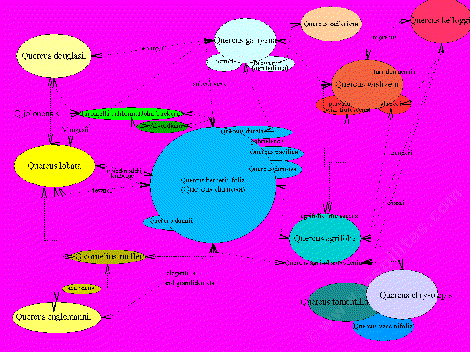California Oaks IV
Quercus kelloggii (Kellogg oak or Black oak)and the relationships of California oaks.
|
Acorn matures in one season (at end of new stems) |
Acorn matures in two seasons (on older stems) |
||
|
I. Evergreen Quercus agrifolia, Q. x alvordiana, Q.dumosa, Q. durata, Q. sadleriana, Q. turbinella |
II. Deciduous Quercus garryana var. breweri, Q. douglasii, Q.engelmannii, Q. garryana, Q. lobata |
III. Evergreen Quercus chrysolepis, Q. parvula, Q. tomentella, Q. vaccinifolia, Q. wislizenii, Lithocarpus densiflorus (Tanbark Oak) |
IV. Deciduous Q. kelloggii, Q. palmeri Oak relationship chart |
| |
|||
IV. California Oaks that bear acorns on the second season's growth and are deciduous.

Black Oak, or Quercus kellogii, seems to pick odd spots in most of California to colonize that do not make much sense when first chanced upon.
Below is a relationship map of the California oaks. After wandering around California for 30 years trying to figure out oak species we've come to the conclusion that there are as few as one true species or as many as six. (Quercus lobata, Quercus dumosa, Quercus wislizenii or Q. agrifolia, Quercus kelloggii, and Quercus chrysolepsis.) This causes great difficulties when all the oaks on a hillside are hybrids of the primary oaks. All the other oaks are subspecies, varieties or hybrids of these , AND should be listed as such, not lumped into species, but the stable, reproducing trees should have a name attached, just not a species rank.
The reproductive parts of the plants should be used for species differentiation, but the acorns and catkins are just too diverse, again leading to the conclusion that most of the California oaks are hybrids or variations of only several species. To add to the confusion the chromosome count for all the major oaks is twelve. If they were truly hybrids they would be multiples of twelve. Instead they seem to be varieties or subspecies of one parent oak somewhere back in the past that has reproduced against itself and California's environment for thousands of years to create a redundant swarm of diverse oaks.
It seems to be very much like a color chart. You can determine the oak is green, but is it light green, aqua green, chartreuse, verdant, deep green, tawny green or lime green? There are only five or maybe six that you can walk up to and have no argument about. Most of the others have something else in them, they are not 'clean colors'.





